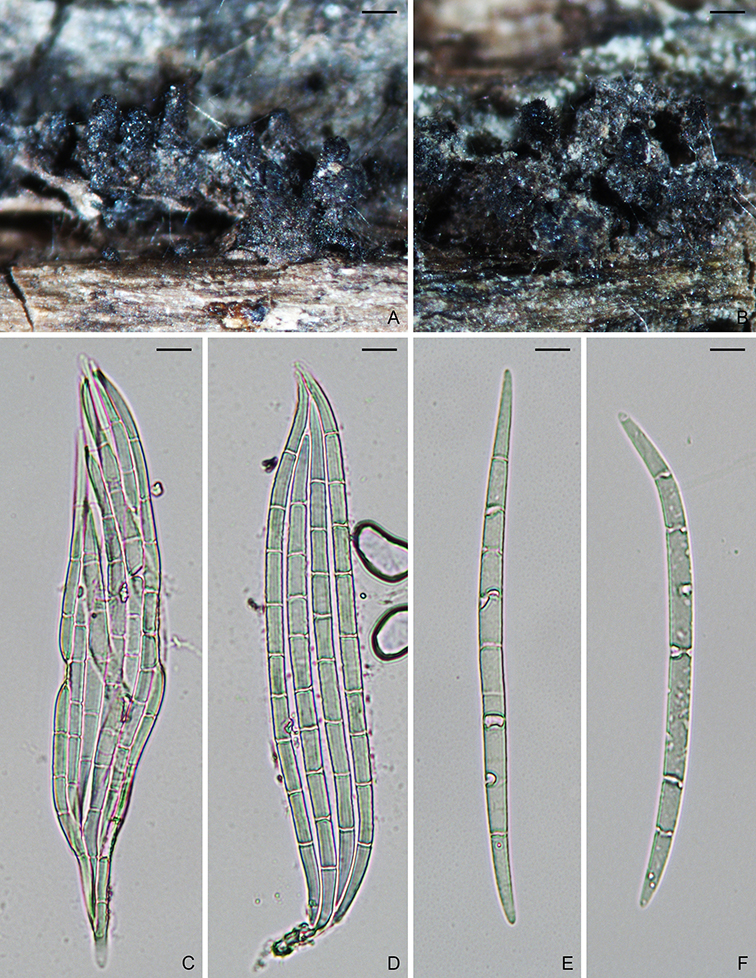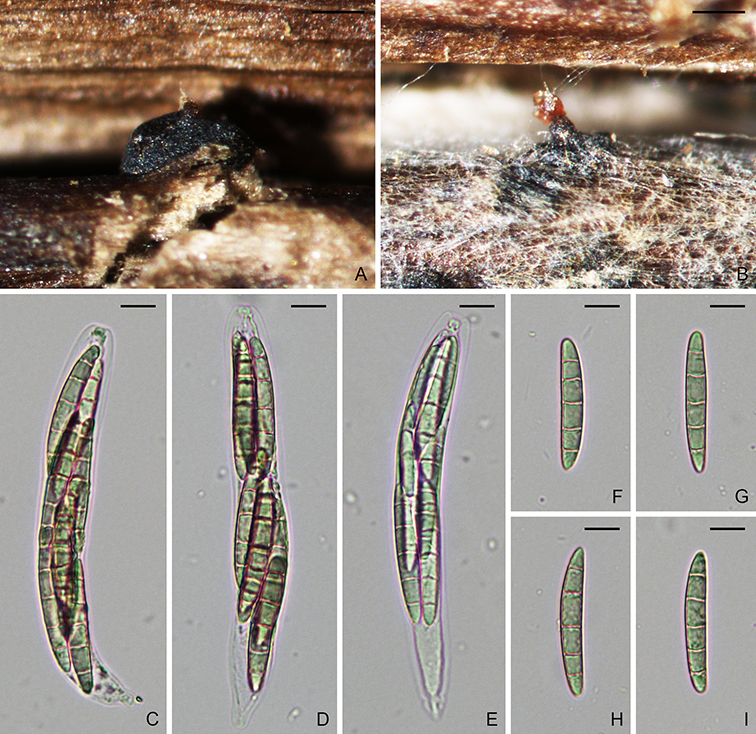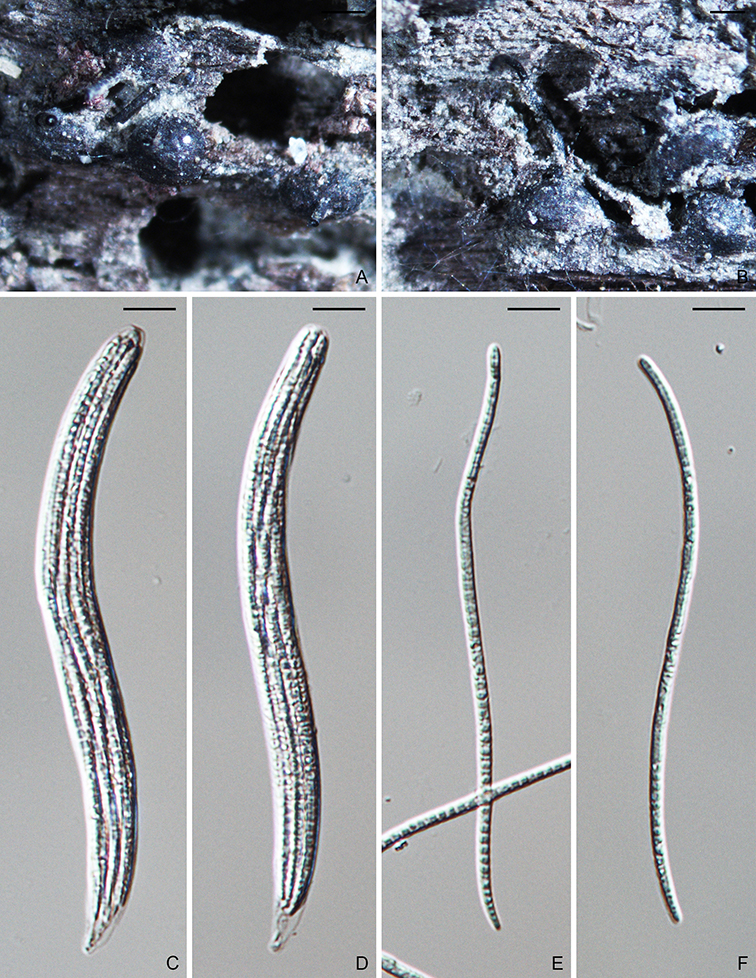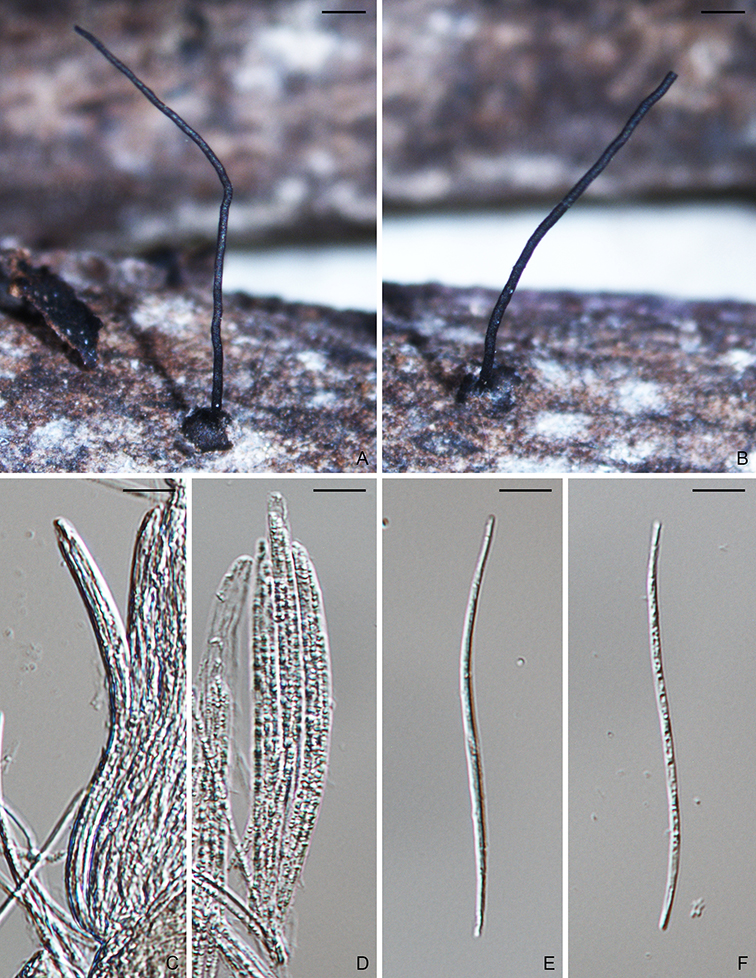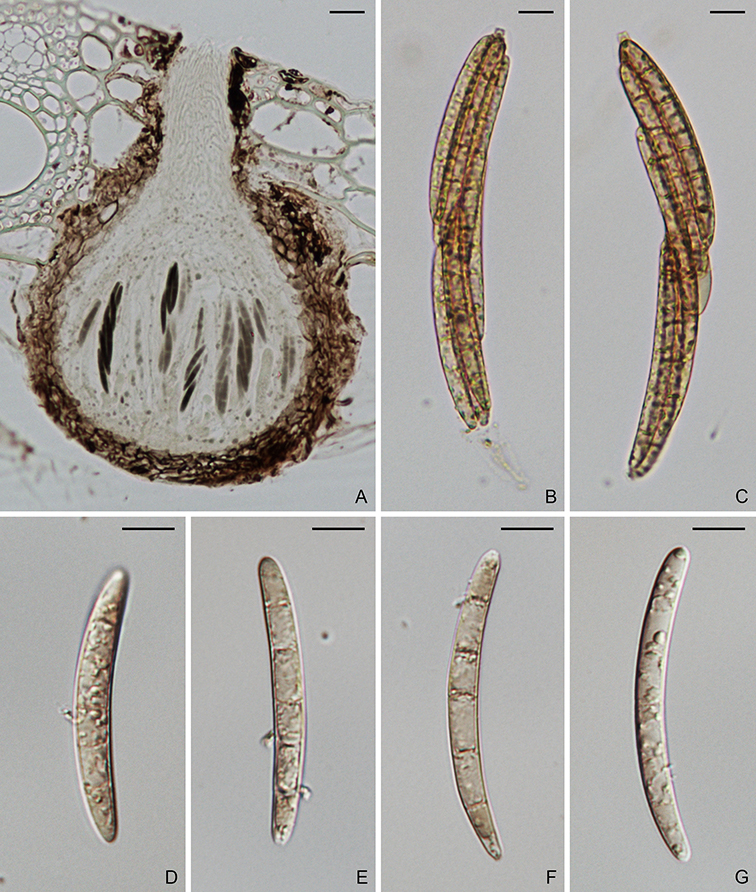Gaeumannomyces avenae (E.M. Turner) Hern.-Restr. & Crous, Stud. Mycol. 83: 15 (2016).
MycoBank: MB816891.
≡ Ophiobolus graminis var. avenae E.M. Turner, Trans. Br. mycol. Soc. 24: 279. 1941 [1940].
= Gaeumannomyces graminis var. avenae (E.M. Turner) Dennis, British Cup Fungi & their Allies: 202. 1960.
Ascomata perithecial, immersed, solitary to gregarious, globose to subglobose, dark brown to black, 300–500 × 250–400 µm diam, with a cylindrical, dark brown to black neck. Paraphyses septate, hyaline, dissolving at maturity. Asci 8-spored, unitunicate, clavate, 115–145 × 12–16 µm, with a refractive ring. Ascospores parallel in ascus, filiform to fusiform, not or slightly curved, 3–7-septate, not constricted at septum, hyaline to yellowish, smooth, (85–)100–125 (–130) × 2.5–3.5 µm. Asexual state unknown (Description from Walker, 1973a).
Typification: Neotype DAR32104. Epitype CBSH-22587. Ex-epitype culture CPC26258.
Gene sequences: JX134655 (18S), JX134668 (ITS), JX134680 (28S), JX134708 (MCM7), JX134722 (RPB1), JX134694 (TEF1).
Genome sequences: SRX798620 (transcriptome).
Hosts/substrates: On Avena and Agrostis (Poaceae).
Distribution: Worldwide.
Notes: Turner (1940) firstly described the oat take-all and whitehead fungus in Wales as Ophiobolus graminis var. avenae (synonym Gaeumannomyces graminis var. avenae). It is characterized by having the largest ascospores among varieties of G. graminis, simple hyphopodia, and habitat on Avena, Agrostis and other Poaceae (Walker, 1972, 1973a; Yao et al., 1992). Hernández-Restrepo et al. (2016) raised the variety to species.
Copyright 2022 by The American Phytopathological Society. Reproduced, by permission, from Luo, J., and Zhang, N. 2022. The Rice Blast Fungus and Allied Species: A Monograph of the Fungal Order Magnaporthales (https://my.apsnet.org/APSStore/Product-Detail.aspx?WebsiteKey=2661527A-8D44-496C-A730-8CFEB6239BE7&iProductCode=46826). American Phytopathological Society, St. Paul, MN.


